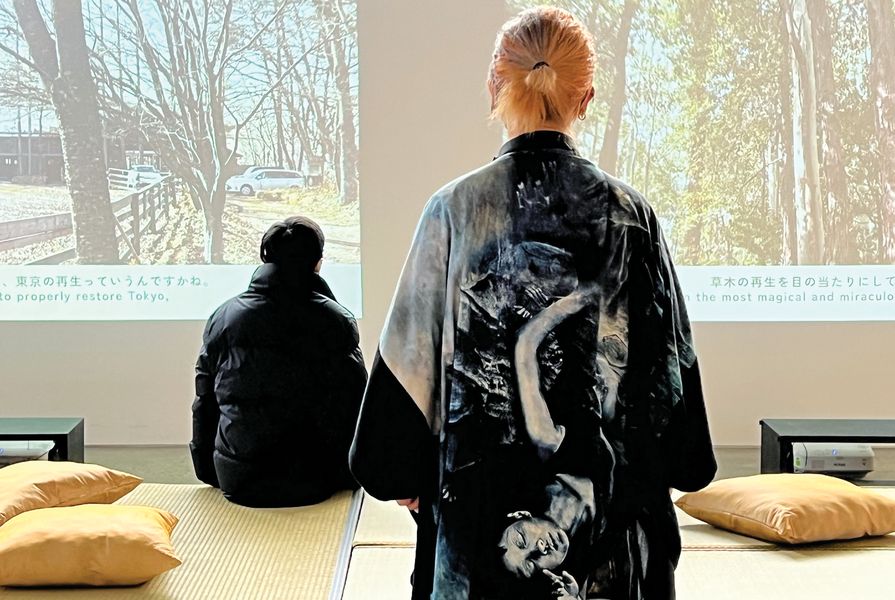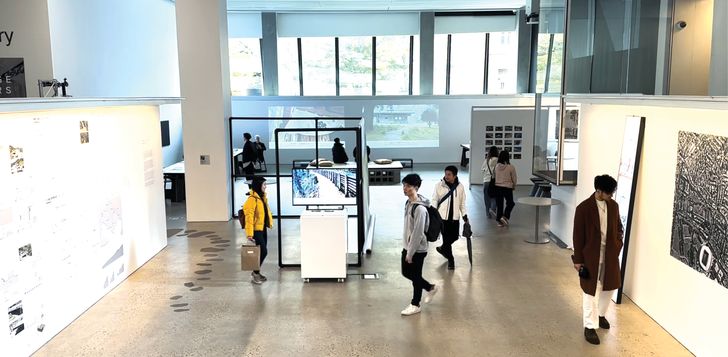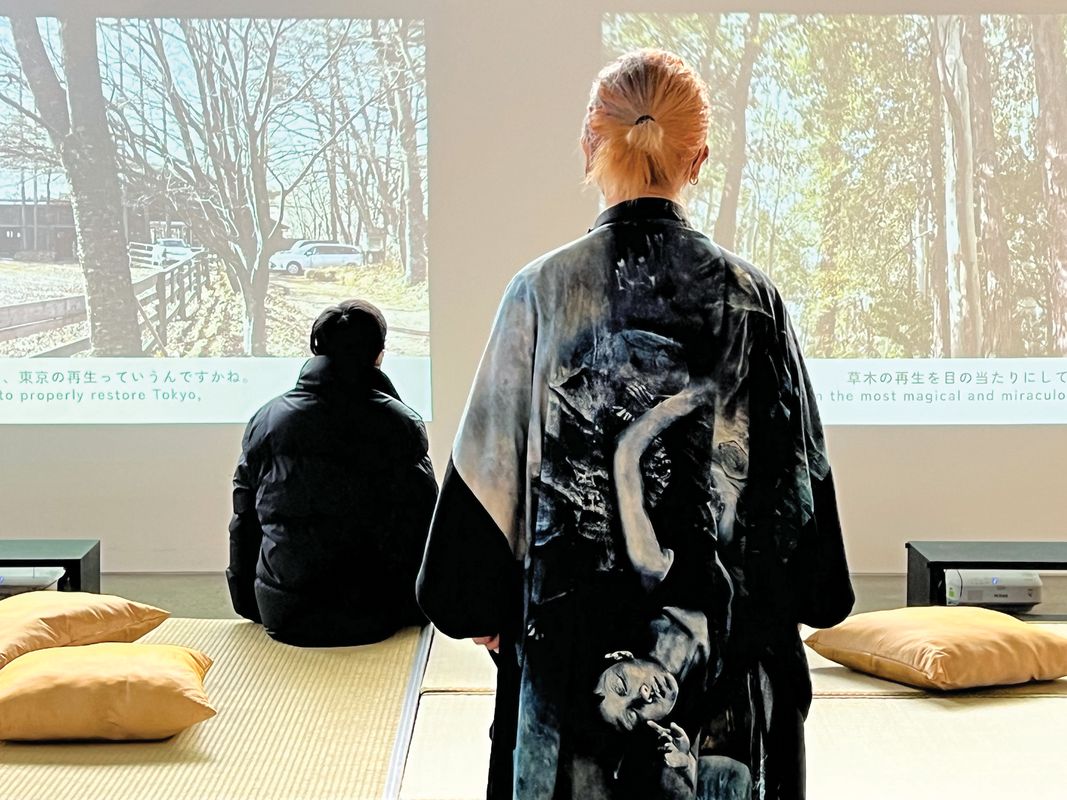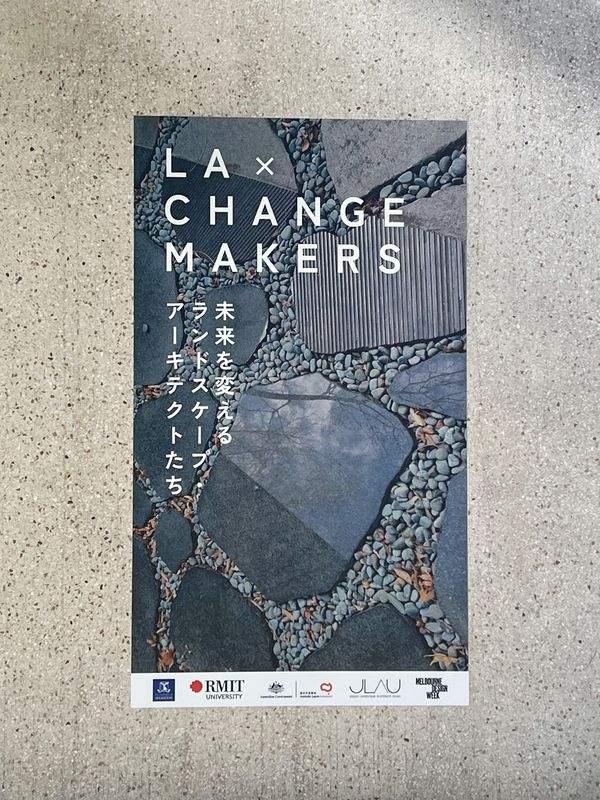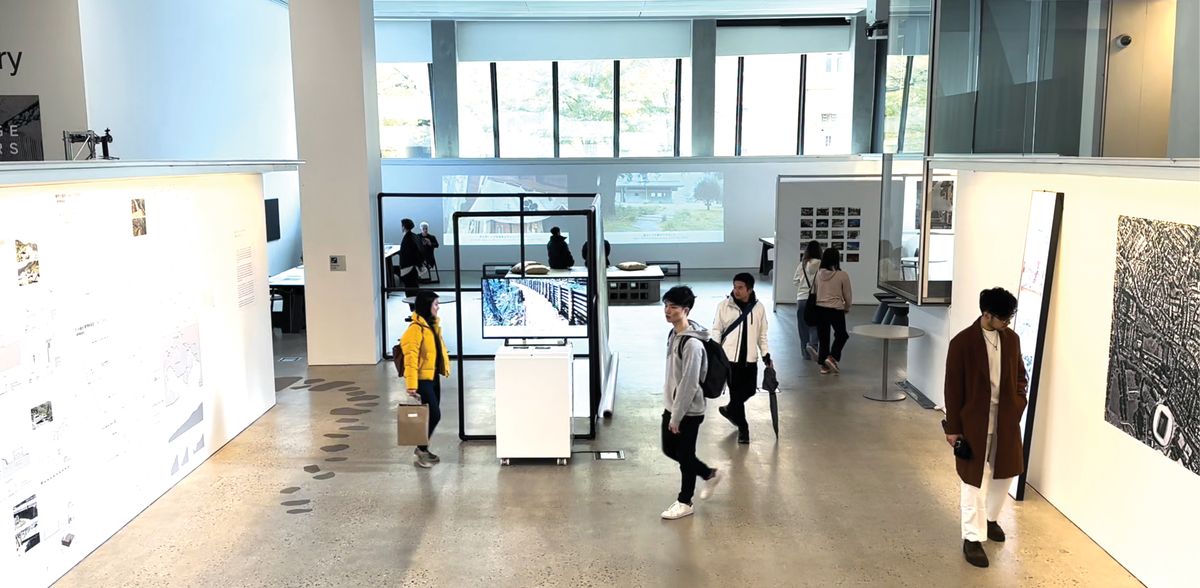Landscape Architects as Change Makers, an exhibition curated by Jillian Walliss and Heike Rahmann in collaboration with Saran Kim, was a layered sensory experience of interviews, site footage, sketches, construction drawings and photographs. A comparative conversation of culture, practice and place, the display of eight Japanese and Australian projects by award-winning landscape architects, paralleled by a series of recorded conversations with practitioners, created a snapshot of landscape architectural practice in 2023.
It is rare to see an exhibition showcasing landscape architecture, especially one that communicates the multi-sensual nature and dynamism of place. The proposition of landscape architects as change makers is not in itself a new idea; I would argue that by nature, all designers make change. However, through its use of audiovisual media alongside traditional representations of design, this exhibition afforded an opportunity to share stories of place and to demonstrate the change made by the considered hand of the landscape architect. The curators successfully represented the scale of practice and the depth of engagement involved – and, importantly, underscored the process of design, as told by the landscape architects themselves.
The exhibition began with a carefully curated collection of Japanese and Australian landscape architectural publications laid out on a lightbox table; in the background, some familiar voices shared industry insights. Tatami mats provided a connection to Japanese culture, inviting me to pause and immerse myself in the soundscapes of the Forest Edge Garden (Jane Irwin Landscape Architecture) and the Queen’s Meadow Country House (Annex and Plantago) projects projected in front of me. As I continued through the space, I admired the hand sketches more often seen lying around on studio desks, and I examined wall-scaled construction drawings while trying not to obsess over details of fixings and footings. The familiar static rendering of these projects engaged my attention, but the layered experience of voices, soundscapes and project footage transported me to these places both familiar and foreign.
Landscape Architects as Change Makers showcased eight projects from award-winning designers from Australia and Japan.
Image: Jillian Walliss
The projects were organized in three sets, categorized around familiar landscape themes. Paddington Reservoir Gardens (JMD Design) and Nihonbashi Garden (Landscape Plus) reflected the industry’s relationship with garden design and, importantly, the role of such spaces in highly dense environments. Okutama Forest Therapy Trail (Studio On Site) and Grampians Peaks Trail (McGregor Coxall) highlighted the challenges of site in creating opportunities to connect to nature. Forest Edge Garden and Queen’s Meadow Country House talked to a restorative practice of design that is driven by a deep understanding and engagement in landscape systems that comes from an innate ability to read the landscape – something that Jane Irwin discussed in her interviews. A fourth set of projects offered a different comparison – one that was less about the designed outcome and more about the cultural difference in the approach to public space through the privately owned Hoshinoya Karuizawa resort (Studio On Site) and the publicly funded Prahran Square (Aspect Studios).
The curated intent was to delve into the tactics and strategies employed by Japanese and Australian landscape architects in creating innovative solutions that address the cultural and ecological conditions specific to their respective regions. The text that accompanied each of the projects enabled the viewer to understand the strategies employed and the impact made; however, it was the additional layer of conversational audiovisual information that provided a greater depth of understanding.
The exhibition combines audiovisual media with more traditional representations of design to demonstrate how landscape architects are enacting through their work.
Image: Saran Kim
More than a celebration of a handful of projects, this exhibition represented a public conversation around contemporary practice. It captured landscape architects’ appreciation for the beauty of landscape, their engagement with time, and their ability to read landscape and understand cultural shifts – all of which are fundamental to this industry. To represent and, more importantly, to share knowledge as a landscape architect requires a communication technique that goes beyond the static and reductive representation offered by singular images and text. This is why many of us sketch in front of clients and present instinctively as passionate orators.
At its core, the exhibition created a space for conversation and knowledge-sharing, one that enabled designers to hear from industry leaders and learn about their methods of practice. It also enabled a conversation with a broader community, helping landscape architects demonstrate how considered design moves can create places for humans that help them to connect to the surrounding world. As landscape architecture continues to evolve, we need to explore new ways of elevating voices in design. The beauty of this exhibition was clearly in its orality. The story of landscape architecture is told most beautifully by the landscape architect through stories of place and practice that weave themselves into our being and connect us to that place forever.
Landscape Architects as Change Makers was on display in the Dulux Gallery at the Melbourne School of Design from 1 May until 1 June 2023, as part of Melbourne Design Week 2023.

